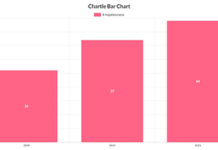
Through Issenberg’s illumination of the donors, activists and attorneys on both sides of the saga, another aspect of the battle for marriage equality becomes starkly clear: its whiteness. Obama plays an important role, certainly, but nearly all of the individuals at the core of the narrative — dozens of them — are white. Issenberg doesn’t shy away from examining the role of race in electoral politics (the loss of the Black vote against Proposition 8, he concludes, was merely the symptom of a more widespread messaging problem), but we don’t learn why, exactly, queer Black activists were such a rarity in the upper echelons of the marriage fight.
They have long told us the reasons: In addition to broader racism and transphobia within the mainstream gay rights movement, marriage was always primarily a white, cisgender issue. “Gay marriage? Please,” wrote Jasmyne Cannick, a Los Angeles-based political strategist and journalist, after the passage of Proposition 8. “The white gay community is banging its head against the glass ceiling of a room called equality, believing that a breakthrough on marriage will bestow on it parity with heterosexuals. But the right to marry does nothing to address the problems faced by both Black gays and Black straights. Does someone who is homeless or suffering from H.I.V. but has no health care, or newly out of prison and unemployed, really benefit from the right to marry someone of the same sex?”
As Issenberg points out, some lesbian feminists like the lawyer and activist Paula Ettelbrick offered early alternatives to marriage, including “making room in our society for broader definitions of family.” In the midst of the post-Baehr conservative backlash, however, detractors found themselves in what Ettelbrick called the “very odd” position of defending marriage against the religious right, thereby tacitly embracing the cause. But despite Issenberg’s nuanced coverage of other intra-movement squabbles, “The Engagement” bypasses several vital critiques of marriage; any book that covers Sullivan’s “Virtually Normal” should also present the arguments of Urvashi Vaid’s “Virtual Equality” (her book is cited briefly), Michael Warner’s “The Trouble With Normal” and Martha Fineman’s “The Neutered Mother, the Sexual Family, and Other Twentieth-Century Tragedies,” to name a few.
In his postscript, Issenberg recognizes that the fight for gay marriage left much of the L.G.B.T.Q. community behind. “Transgendered Americans were certainly no better off than they had been,” he writes. This admission raises the question: What was lost in spending untold millions of dollars on same-sex marriage instead of a more expansive form of queer liberation? Given that queer and trans people of color had been offering alternative visions of freedom since the beginning of L.G.B.T.Q. organizing, what if we had instead focused on the most marginalized members of our community, those who put their bodies on the line at the Stonewall riots of 1969? What if, before pursuing marriage, we had first provided housing to American youth experiencing homelessness, up to 40 percent of whom identify as queer? If we had funneled our resources to protect and elevate Black trans women, who are now facing an epidemic of violence?
In the era of de-Trumpification, the L.G.B.T.Q. community has the opportunity to consider what it can and must accomplish now that marriage equality has granted tax and social privileges only to those able and willing to join that institution. Meanwhile, Issenberg leaves us with a valuable lesson: We must pick our battles wisely, for they dictate not just our rights, but also the limits of our political imagination.








